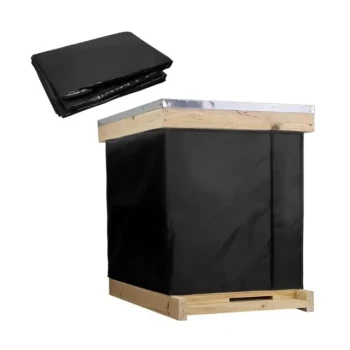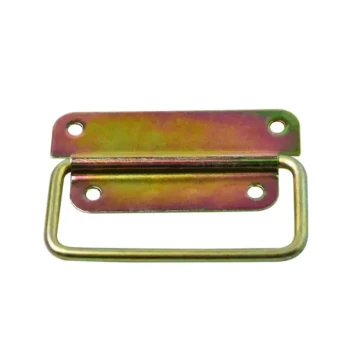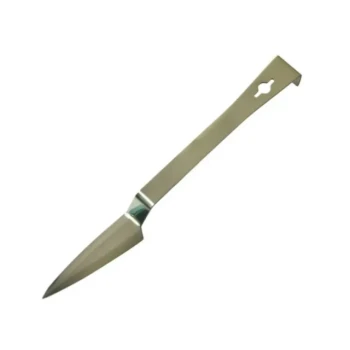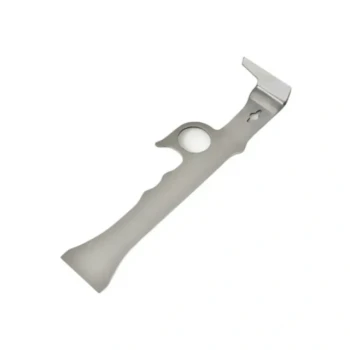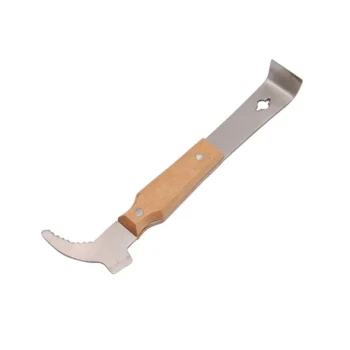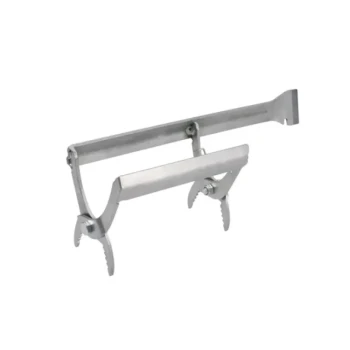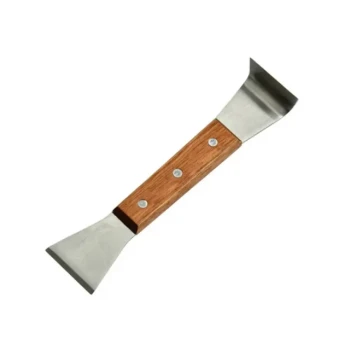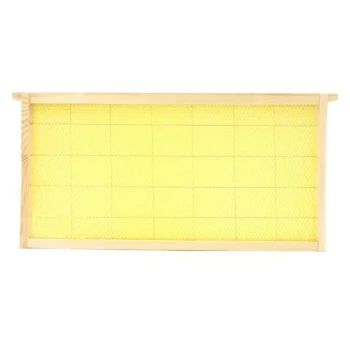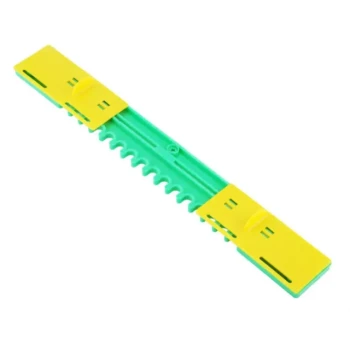In short, the inner cover is a multi-function component that sits between the top hive box and the outer telescoping cover. It serves as a crucial barrier that provides insulation, improves ventilation, and prevents the bees from sealing the hive shut, making inspections and management significantly easier.
The inner cover is not just a secondary lid; it is a critical tool for regulating the hive's internal environment. Understanding its functions is key to managing hive temperature, moisture, and overall health throughout the year.

The Inner Cover as a Climate Control System
A healthy colony's primary job is to maintain a stable internal environment, particularly in the brood nest. The inner cover is one of your most effective tools for helping the bees achieve this goal.
Providing Critical Insulation
The inner cover creates a layer of dead air space between the top of the frames and the outer cover. This pocket of air acts as a buffer against extreme external temperatures.
In the heat of summer, it insulates the colony from the scorching sun hitting the outer cover. In winter, it helps retain the warmth generated by the bee cluster, reducing the energy they must expend to stay warm.
Managing Airflow and Moisture
Most inner covers have a central hole and often a small, notched rim. These features are not accidental; they are essential for ventilation.
In summer, the bees use this opening to help circulate air and cool the hive. More importantly, in winter, this upper opening allows warm, moist air to escape. This prevents condensation from forming on the cold outer cover and dripping back down onto the bee cluster, which can be fatal.
A Tool for Efficient Hive Management
Beyond climate control, the inner cover vastly simplifies the beekeeper's work by preserving the structure and accessibility of the hive.
Preventing a "Glued Shut" Hive
Bees use a sticky resin called propolis to seal every crack and gap inside the hive. Without an inner cover, they would firmly glue the outer cover directly to the top bars of the frames.
Opening the hive would require significant force, jarring the colony and potentially breaking frames. The inner cover provides a predictable, easily separated barrier that makes hive inspections far less disruptive.
Creating an Upper Entrance
The small notch found on the rim of many inner covers serves as an upper entrance and exit. This reduces traffic congestion at the main bottom entrance during a heavy nectar flow.
In winter, this upper entrance can be a lifesaver, ensuring bees can still exit for cleansing flights even if the bottom entrance becomes blocked by snow or dead bees.
Facilitating Feeding and Harvesting
The central hole is perfectly designed to accommodate certain types of feeders. A jar of syrup can be inverted directly over the hole, allowing you to feed the colony without fully opening the hive.
This same principle is used for harvesting. A device called a bee escape can be placed over the hole to allow bees to move down out of a honey super while preventing them from re-entering, clearing the box for easy removal.
Understanding the Trade-offs
While indispensable in standard beekeeping, the design and use of an inner cover involve some considerations.
Standard vs. Vented Covers
A standard wooden inner cover is the most common design. However, some beekeepers opt for screened or vented inner covers to maximize airflow, especially in hot, humid climates.
The trade-off is a potential loss of insulation. A vented cover that is excellent for summer heat may be detrimental in winter, whereas a standard solid cover offers a better balance for four-season climates.
The Notch: Entrance or Weak Point?
While the upper entrance notch is beneficial, it can also be a point of entry for robbing bees or pests if the colony is weak. Some beekeepers choose to orient the inner cover with the notch facing down (on the deep side) to close it off during certain times of the year.
This decision balances the need for ventilation and a secondary entrance against the need for maximum defensibility.
Making the Right Choice for Your Hive
How you use the inner cover depends on your specific goals and the time of year.
- If your primary focus is overwintering success: Use the inner cover to provide an upper exit for moisture-laden air to prevent condensation inside the hive.
- If your primary focus is ease of management: Always use an inner cover to prevent the bees from propolizing the outer cover to the frames, making inspections smooth and non-disruptive.
- If your primary focus is honey production: Leverage the inner cover's central hole for efficient feeding during spring build-up and for using a bee escape during harvesting.
This simple wooden rectangle is a small component with a massive impact on the health of your colony and the efficiency of your beekeeping.
Summary Table:
| Function | Benefit |
|---|---|
| Insulation | Creates a dead air space to buffer against extreme heat and cold. |
| Ventilation | Allows moisture to escape in winter and cools the hive in summer. |
| Prevents Propolis Seal | Stops bees from gluing the outer cover shut for easy inspections. |
| Upper Entrance | Provides an alternative exit, reducing congestion and aiding winter survival. |
| Facilitates Feeding/Harvesting | Central hole accommodates feeders and bee escapes for efficient management. |
Ready to equip your apiary with high-quality, durable inner covers and other essential beekeeping supplies?
At HONESTBEE, we supply commercial apiaries and equipment distributors with the reliable tools needed for successful hive management. Our wholesale-focused operations ensure you get the best value on equipment that supports colony health and beekeeper efficiency.
Contact HONESTBEE today to discuss your supply needs and discover how our products can contribute to your success.
Visual Guide
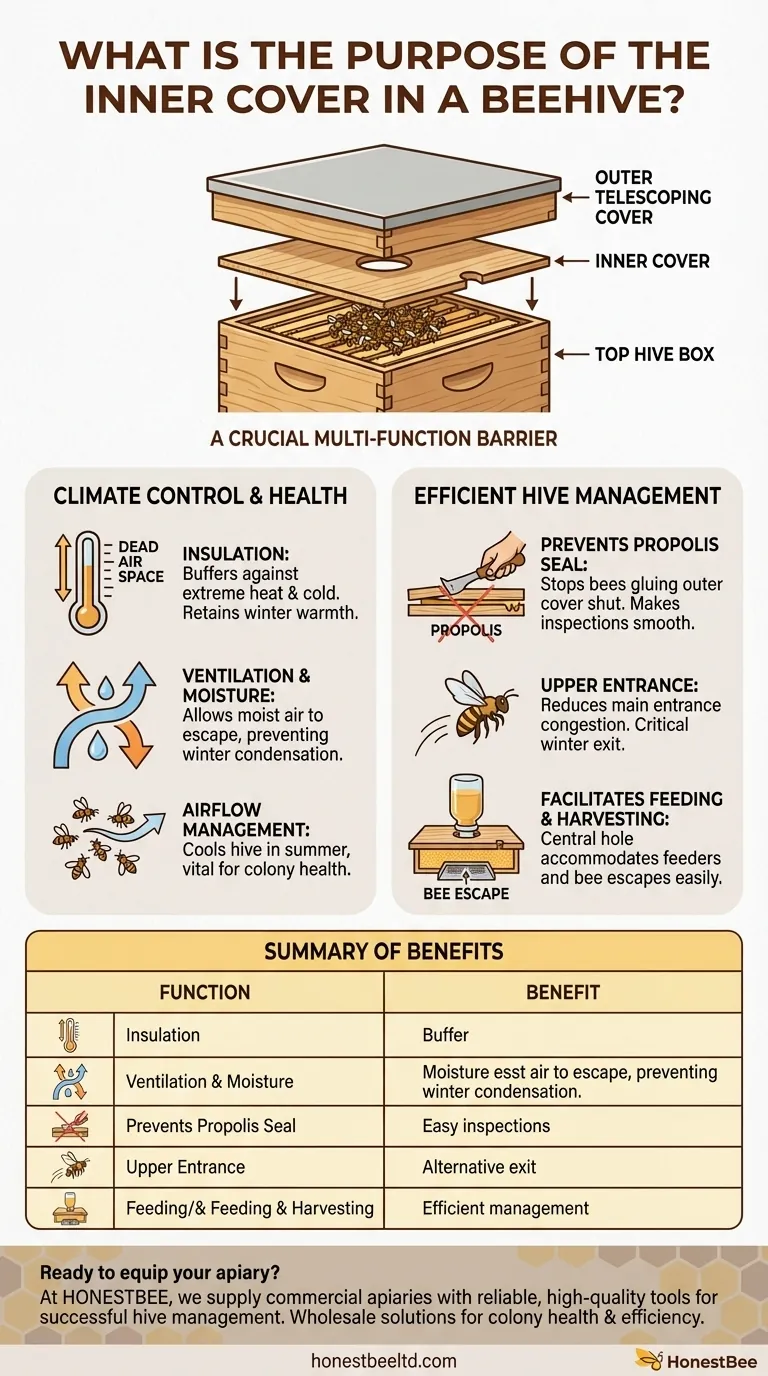
Related Products
- Inner Beehive Cover for Beekeeping Bee Hive Inner Cover
- Professional Insulated Winter Hive Wrap for Beekeeping
- Professional Insulated Plastic Bee Hives
- Stainless Steel Round Beehive Air Vents for Ventilation
- Professional Drop-Style Hive Handles for Beekeeping
People Also Ask
- What are the advantages of using an inner cover in a beehive? Key Benefits for Hive Health & Beekeeper Efficiency
- What is an inner cover in a beehive and what are its features? A Key Tool for Hive Health & Management
- What is the role of inner covers in insulated beehives? Master Moisture Control for a Healthy Colony
- Why might beekeepers use an inner cover under the telescoping outer cover? Simplify Hive Management & Protect Your Colony
- What is the function of an inner cover in a beehive? Essential for Hive Health & Management

